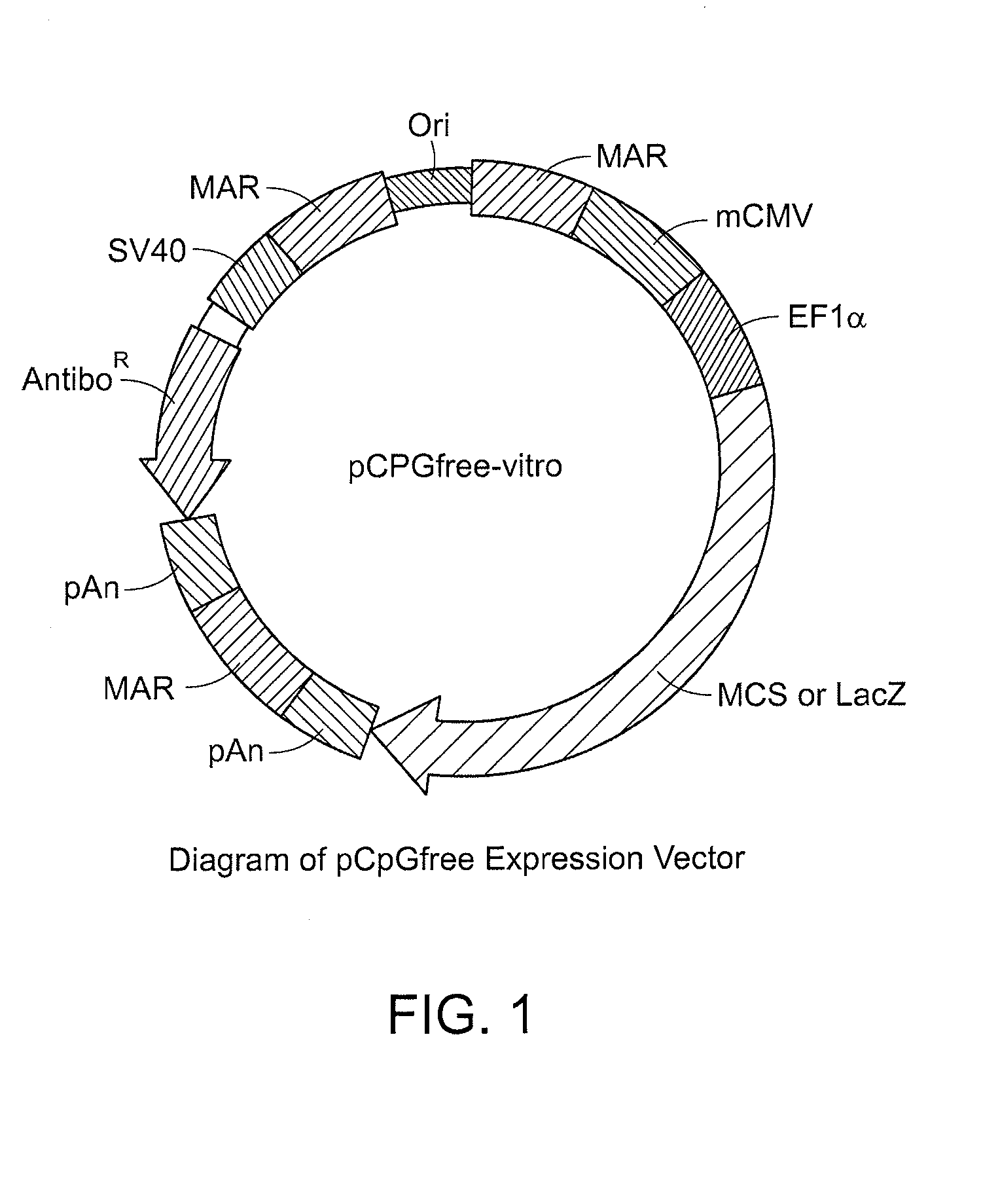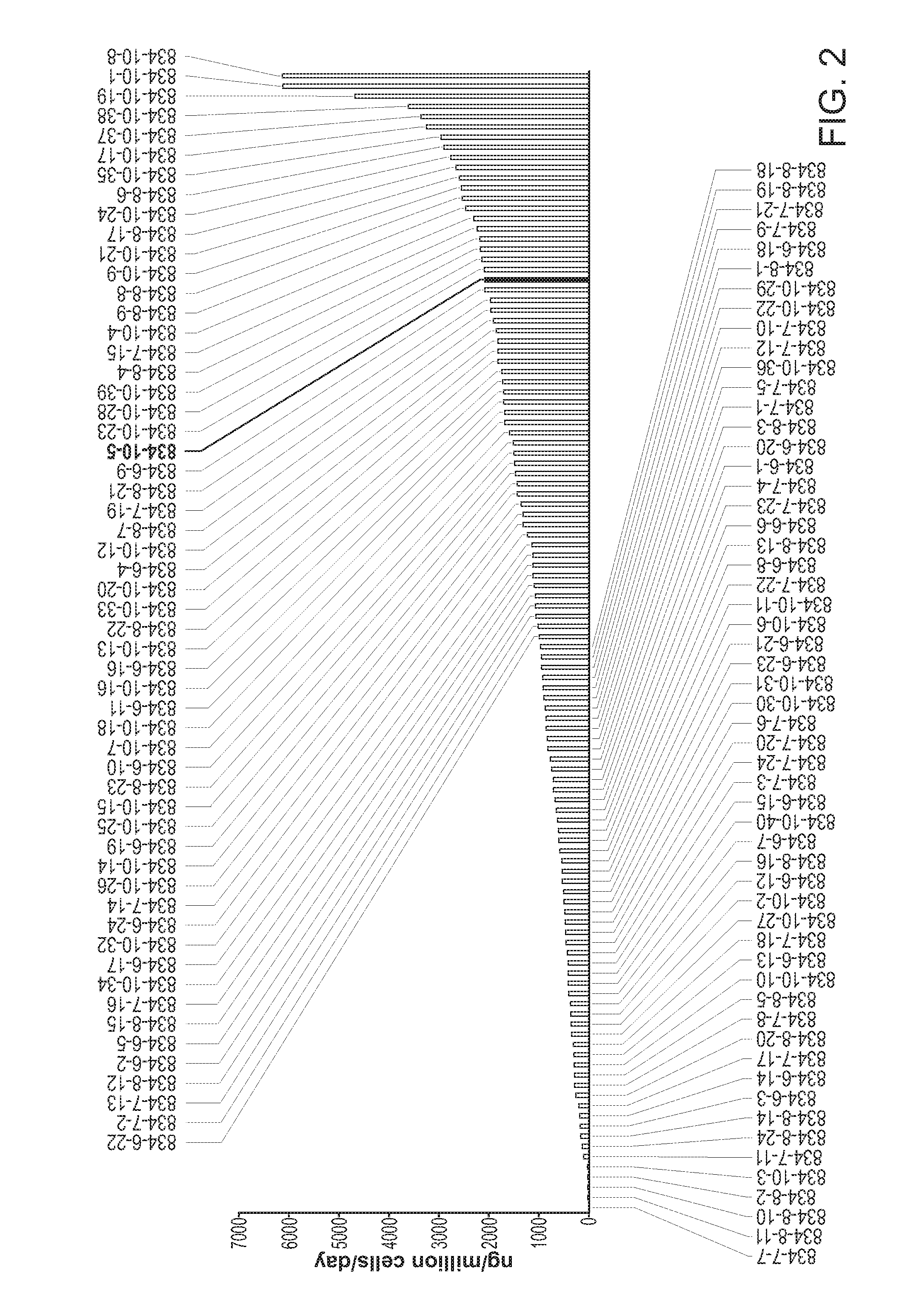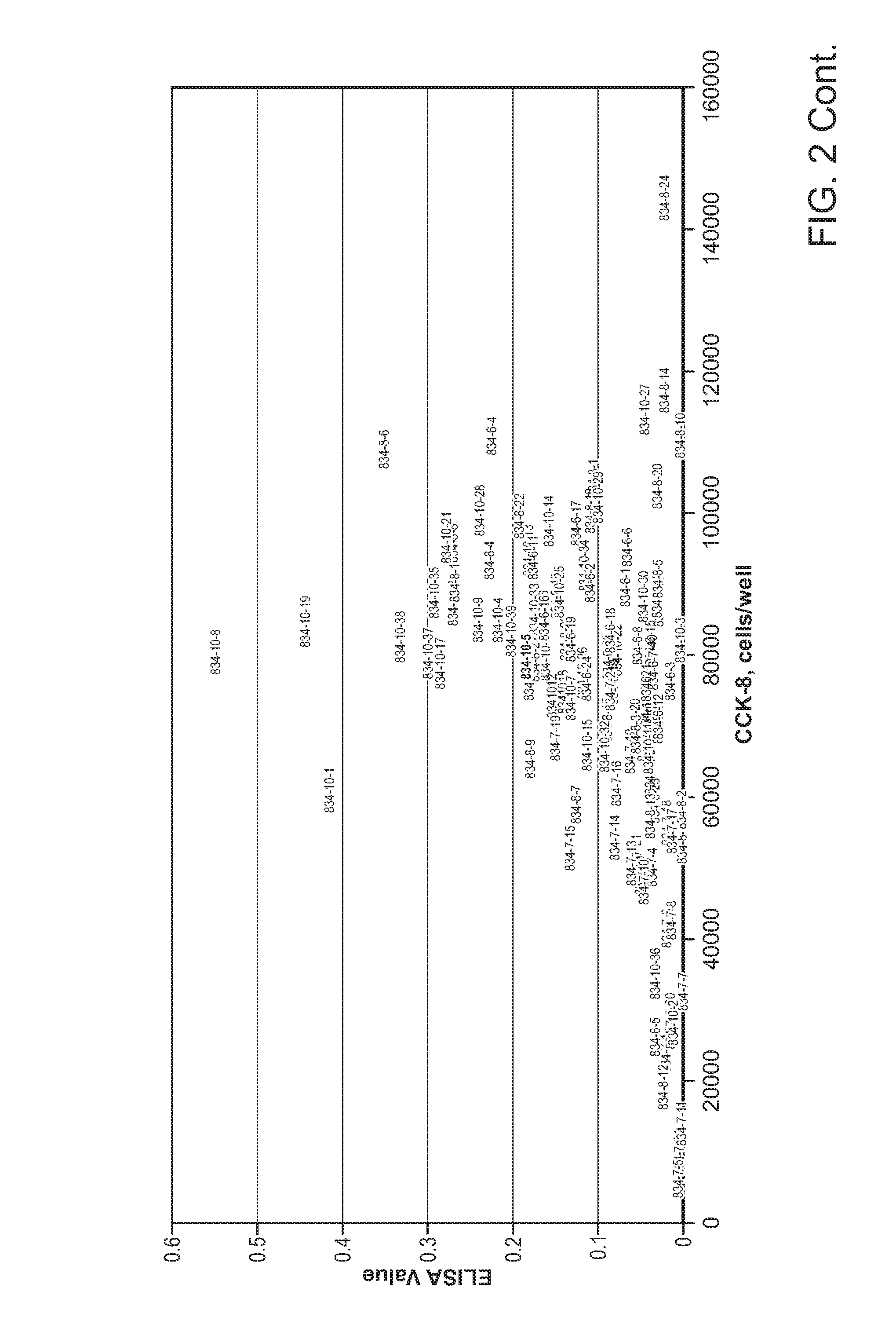Cell lines that secrete anti-angiogenic antibody-scaffolds and soluble receptors and uses thereof
a cell line and anti-angiogenic technology, applied in the field of encapsulated cell therapy, can solve the problems of loss of transplant function, eventual necrosis of transplanted tissue or cells, and limited application, and achieve the effects of inhibiting endothelial cell proliferation
- Summary
- Abstract
- Description
- Claims
- Application Information
AI Technical Summary
Benefits of technology
Problems solved by technology
Method used
Image
Examples
example 1
Cellular Sub-cloning
[0303]Various anti-angiogenic antibody-scaffolds and soluble VEGF receptors were expressed in NTC-200 cells. As described herein, the terms “NTC-200” and “ARPE-19 cells” are used interchangeably to described the preferred cell types that are genetically engineered to express the anti-angiogenic antibody-scaffolds and soluble VEGF and PDGF receptors of the invention.
[0304]To achieve secretion of the protein, the constructs contained either the native or IgSP murine immunoglobulin leader sequence, the latter of which was used previously to direct secretion of CNTF from NTC-200 cells. Nucleotide and amino acid sequences of intended proteins and corresponding nucleic acid sequences, are described herein as follows:
[0305]1) p834
[0306]2) p838
[0307]3) p876
[0308]4) p873
[0309]5) p874
[0310]6) p875
[0311]7) p915
[0312]8) p914
[0313]9) p916
[0314]10) p913
[0315]11) p917
[0316]12) p964
[0317]13) p963
[0318]14) p974
[0319]15) p978
[0320]16) p977
[0321]For the soluble VEGF receptors (e.g....
example 2
Cell Line Construction
[0323]Verified plasmid clones were used to transfect NTC-200 cells to obtain stable polyclonal cell lines. Briefly, 200-300K cells, plated 18 hours previously, were transfected with 3.0 ug of plasmid DNA using 6.0 ul of Fugene 6 transfection reagent (Roche Applied Science, Indianapolis Ind.) according to the manufacturer's recommendations. Transfections were performed in 3.0 ml of DMEM / F12 with 10% FBS, Endothelial SFM or Optimem media (Invitrogen Corp, Carlsbad, Calif.). Twenty four to 48 hours later cells were either fed with fresh media containing 1.0 ug / ul of G418 or passaged to a T-25 tissue culture flask containing G418. Cell lines were passaged under selection for 14-21 days until normal growth resumed, after which time drug was removed and cells were allowed to recover (˜1 week) prior to characterization.
[0324]These polyclonal cell lines were dispersed, and then seeded on dishes. After appropriate growth, hundreds to thousands of individual colonies cou...
example 3
Cell Line Screening and Hit Determination
[0343]Recombinant NTC-200 cell lines expressing anti-angiogenic molecules were generated as described, one example of a screening selection is shown here for molecule p834, a VEGFR-Fc molecule. Anti-VEGFR ELISA assays were applied to clonal supernatants and cell counting kit 8 method (CCK-8, Dojindo Inc.) was used to enumerate cell number of the clone analyzed. In this Example, rank ordering of clones indicates that at least 8 clonal hits have productivity of greater than 10,000 ng / million cells / day (10 picogram / cell / day (pcd)) in this screening ELISA. In the scatter plot shown in FIG. 2, p834 subclones were plotted using ELISA output versus cell number, allowing the visualization of clonal lines that may exhibit growth and secretion properties beneficial for beneficial ECT scale-up propagation.
[0344]Current cell line production of 9 different antibody and receptor based Fc-molecules result in cell line outputs that are in the range of 7-20 p...
PUM
| Property | Measurement | Unit |
|---|---|---|
| pore size | aaaaa | aaaaa |
| thick | aaaaa | aaaaa |
| Tm | aaaaa | aaaaa |
Abstract
Description
Claims
Application Information
 Login to View More
Login to View More - R&D
- Intellectual Property
- Life Sciences
- Materials
- Tech Scout
- Unparalleled Data Quality
- Higher Quality Content
- 60% Fewer Hallucinations
Browse by: Latest US Patents, China's latest patents, Technical Efficacy Thesaurus, Application Domain, Technology Topic, Popular Technical Reports.
© 2025 PatSnap. All rights reserved.Legal|Privacy policy|Modern Slavery Act Transparency Statement|Sitemap|About US| Contact US: help@patsnap.com



